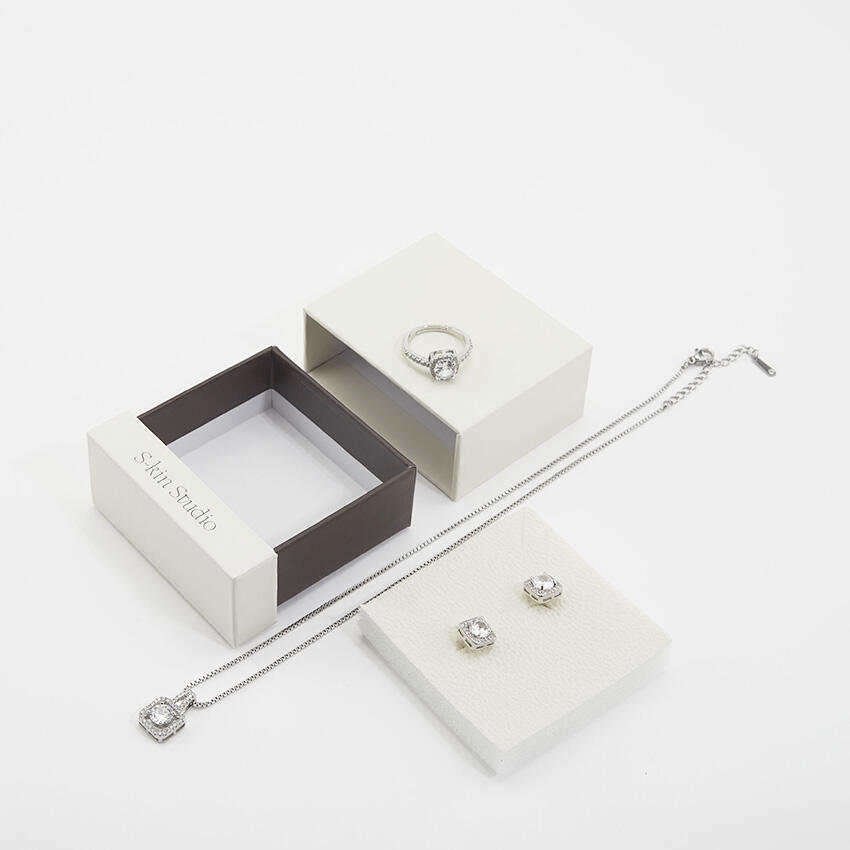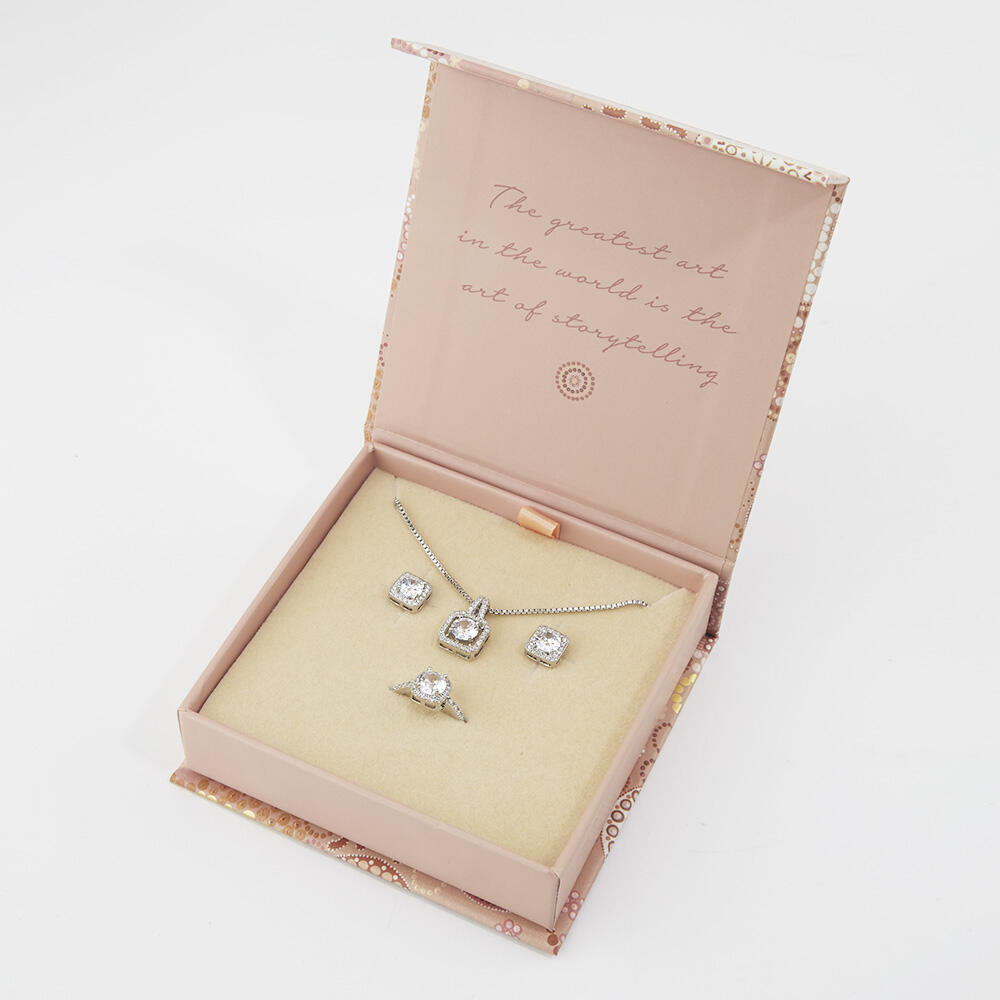Understanding Premium Materials for Jewelry Storage Solutions
When it comes to protecting and displaying precious jewelry pieces, the material choice for jewelry boxes plays a crucial role in both functionality and aesthetics. High-quality jewelry boxes not only safeguard valuable items but also serve as elegant decorative pieces that enhance the overall experience of jewelry ownership. The right materials can make the difference between a temporary storage solution and a lasting heirloom piece.
The world of jewelry boxes encompasses a wide range of materials, each bringing unique characteristics that contribute to durability, protection, and visual appeal. From classic wooden constructions to modern synthetic options, understanding these materials helps in making an informed choice for preserving cherished jewelry collections.
Traditional Wood Options for Jewelry Boxes
Premium Hardwoods
Hardwoods have long been the gold standard for crafting jewelry boxes, offering natural beauty and exceptional durability. Cedar, mahogany, and walnut stand out as premier choices, each bringing distinct advantages to jewelry storage solutions. Cedar, in particular, provides natural protection against moths and humidity, while mahogany offers rich coloring and excellent longevity.
The grain patterns and natural variations in hardwoods create unique pieces that become more beautiful with age. These materials can be finished in various ways to enhance their protective properties and aesthetic appeal, making them perfect for both contemporary and traditional jewelry boxes.
Exotic Wood Varieties
Exotic woods like rosewood, ebony, and burl wood provide exceptional elegance and distinctiveness to jewelry boxes. These materials often feature striking patterns and rich colors that make each piece truly unique. While typically more expensive, exotic woods offer unmatched visual appeal and can significantly enhance the perceived value of jewelry boxes.
The density and natural oils present in many exotic woods also provide excellent protection for jewelry items, helping to maintain stable internal conditions that prevent tarnishing and damage.
Modern Synthetic Materials
High-Grade Plastics and Acrylics
Contemporary jewelry boxes often incorporate high-quality synthetic materials that offer excellent durability and versatile design options. Premium plastics and acrylics provide lightweight yet sturdy construction, with the ability to create clear viewing panels or sophisticated colored finishes. These materials are particularly resistant to moisture and can be molded into innovative shapes impossible with traditional materials.
Modern synthetic materials also excel in providing consistent quality and precise manufacturing tolerances, ensuring perfect fits for compartments and drawers in jewelry boxes. They can be engineered to include specific properties like UV protection or anti-static characteristics.
Composite Materials
Advanced composite materials combine different elements to create jewelry boxes with enhanced properties. These might include reinforced polymers or hybrid materials that offer superior strength while maintaining elegant appearances. Composite materials often provide excellent value, combining durability with cost-effectiveness.
These innovative materials can be designed to mimic natural substances while offering improved performance characteristics, such as better resistance to temperature changes or enhanced protective properties for delicate jewelry items.
Luxury Fabric and Leather Applications
Premium Leather Exteriors
High-quality leather brings sophistication and tactile pleasure to jewelry boxes. Full-grain leather, in particular, offers exceptional durability while developing a beautiful patina over time. The natural variations in leather texture create unique pieces that become more distinguished with age.
Leather-covered jewelry boxes often feature reinforced cores for structural integrity while providing a luxurious exterior that appeals to discerning collectors. The material's natural properties also help regulate humidity levels within the box.
Velvet and Silk Interiors
The interior lining of jewelry boxes is crucial for protecting precious items from scratches and damage. Premium velvet and silk materials excel in this role, providing soft, non-abrasive surfaces that cradle jewelry pieces securely. These materials also add a luxurious touch that enhances the overall presentation of jewelry collections.
Different grades of velvet and silk offer varying levels of durability and plushness, with some specially treated varieties providing additional protection against tarnishing and environmental factors.

Metal Components and Accents
Precious Metal Embellishments
High-end jewelry boxes often incorporate precious metal elements that add both functionality and decorative value. Gold-plated or sterling silver hardware, hinges, and clasps not only ensure smooth operation but also enhance the overall luxury appeal of the piece. These materials resist corrosion and maintain their beauty with proper care.
The strategic use of precious metals in jewelry boxes can transform a simple storage solution into an artistic masterpiece that complements the valuable items stored within.
Protective Metal Features
Structural metal elements play a vital role in creating durable jewelry boxes. Quality brass hinges, reinforced corners, and secure locks ensure long-term functionality while adding sophisticated details to the design. These components must be carefully selected to prevent any chemical reactions with stored jewelry items.
Modern metal treatments and finishes can provide additional protection against wear while maintaining aesthetic appeal, making them essential elements in premium jewelry boxes.
Frequently Asked Questions
How Long Do Different Jewelry Box Materials Last?
High-quality hardwood jewelry boxes can last for generations with proper care, often exceeding 50 years. Premium leather-covered boxes typically maintain their beauty for 15-20 years, while well-made synthetic materials can remain functional for 10-15 years or more. The longevity largely depends on storage conditions and maintenance practices.
What Material Best Protects Against Tarnishing?
Cedar wood naturally helps prevent tarnishing due to its inherent properties that regulate humidity and repel moths. Additionally, jewelry boxes with anti-tarnish fabric linings or those incorporating specialized synthetic materials with moisture-control properties offer excellent protection for precious metals.
Are Natural or Synthetic Materials More Cost-Effective?
While synthetic materials often have lower initial costs, premium natural materials like hardwoods and quality leather typically offer better long-term value due to their durability and ability to age beautifully. The choice ultimately depends on individual preferences and intended use, with both options providing viable solutions for different needs and budgets.



